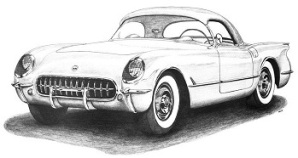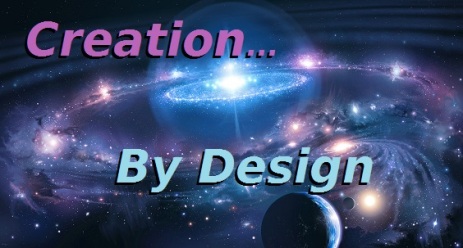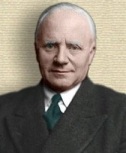
July 14
Last week, in talking about the skeletal similarities between reptiles and birds, we brought up the subject of homology (how various features in different species look very much alike). This week, I wanted to take a more in-depth look at this topic…
If you search any biology textbook you will most likely see a diagram showing the remarkable structural similarity in vertebrate limbs.

In the classic diagram we see the skeletal structure of a bat’s wing, a dolphin (or whale) flipper, a horse’s leg, and a human arm. Four very different types of creatures – four very similar bone structures. Why would this be the case?
For decades, evolutionists (from Charles Darwin until now) have been proposing the  standard answer for this striking observation… similar structures (homology) are direct evidence that all these creatures came from a common ancestor. To Darwin, it was a classic no-brainer: These similar structures “explain themselves on the theory of descent with slow and slight modifications.” And “proclaim so plainly, that the innumerable species… are all descended… from common parents.”
standard answer for this striking observation… similar structures (homology) are direct evidence that all these creatures came from a common ancestor. To Darwin, it was a classic no-brainer: These similar structures “explain themselves on the theory of descent with slow and slight modifications.” And “proclaim so plainly, that the innumerable species… are all descended… from common parents.”
Darwin saw evolution as a theory, and homology provided evidence for it.
But today, evolution is assumed as a fact and homology is its result. In other words, common ancestry is the definition of homology – and also its explanation.
It is the classic circular reasoning. Homology proves common ancestry and common ancestry is proven by homology.

Everything is based on the assumption of common ancestry – because everything looks so similar it simply must have come from something similar. A fact that should be obvious to anyone.
So much so, that biologist Tim Berra, in his book Evolution and the Myth of Creationism, used an analogy from the automotive world to make his case. He asked his readers to “compare 1953 and a 1954 Corvette, side by side, then a 1954 and a 1955 model, and so on…”


His conclusion: “descent, with modification, is overwhelmingly obvious… the evidence is so solid and comprehensive that it cannot be denied by reasonable people.” (emphasis in the original)
But this illustration actually opens the door for another “reasonable” explanation. Corvettes certainly look “similar” – but as the years progress they “evolve” with different features and better advances in engineering and manufacturing procedures.
AND behind it ALL is… Design. Intelligence. Thought. Engineering.
Corvettes do not come into being by themselves… and they do not “advance” on their own. Behind every concept is a human mind. Behind every feature is intelligence. Behind every improvement is new information applied differently.
In the end, Berra only affirmed what he was trying to disprove…

Evolution has yet to provide a mechanism for “how the innumerable species inhabiting this world would have been modified.” (Charles Darwin)
Darwin did not have the “how.”
But many of his successors offered a solution from the field of genetics. Homologous features were said to be attributed to similar genes inherited from a common ancestor. That makes sense… since we know that our DNA and our genes form and shape our biological structures.
 The problem is… these genetic “pathways” which were supposed to lead to homologous structures did not fit the evidence. Biologist Gavin de Beer stated: “The fact is that correspondence between homologous structures cannot be pressed back to similarity of position of the cells in the embryo… or of developmental mechanisms by which they are formed.”
The problem is… these genetic “pathways” which were supposed to lead to homologous structures did not fit the evidence. Biologist Gavin de Beer stated: “The fact is that correspondence between homologous structures cannot be pressed back to similarity of position of the cells in the embryo… or of developmental mechanisms by which they are formed.”
What fascinated those who studied the formation of these structures was the many and various ways that all these similar structures came about by such dissimilar ways!
For example, take the formation of the hand in a human and a frog.


When fully formed, they look eerily similar. But for the human, the fingers are formed (in the womb) as the cells between them “dissolve away.” In the frog, the fingers “grow out” from “nubs” on the forming hand structure. Two very different ways of “making” a hand.
This is only one example from hundreds! Things that look the same… often didn’t come to be, the same way.
This is not what evolution expected. IF we came from some common ancestor, we would expect that our homologous structures would form in the same way. Why all the variety of ways in which similar things come to be?
Evolution claims that all this similarity is because of a common ancestor.
But there is a better answer to the question of why we see so many homologous forms in our world today.
There is a common Creator. Someone with the intelligence and the power to design and create all things… and to do it in a myriad of ways (according to each kind). The similarity seen in the forelimbs of so many vertebrates can be explained by the fact of a good and functional design – one the Creator found beneficial and useful in all the diverse ways that such diverse creatures would need.
This is not so strange. All of our cars today (even our Corvettes!) have tires. Some are small. Some are big. Some have a high speed rating. Some have long life. Some have tread for getting around in the rain. Some for the snow. Some tires have no tread at all. They may all look similar… but they have different purpose or function.

But all cars have tires. Why? Because cars were designed to have tires… and tires are the best functional design for all our makes and models of cars.
Maybe some day our cars won’t have any tires. But that won’t be a sign that they have evolved. It will be a sure sign that someone really smart designed and created a way for that to happen.

